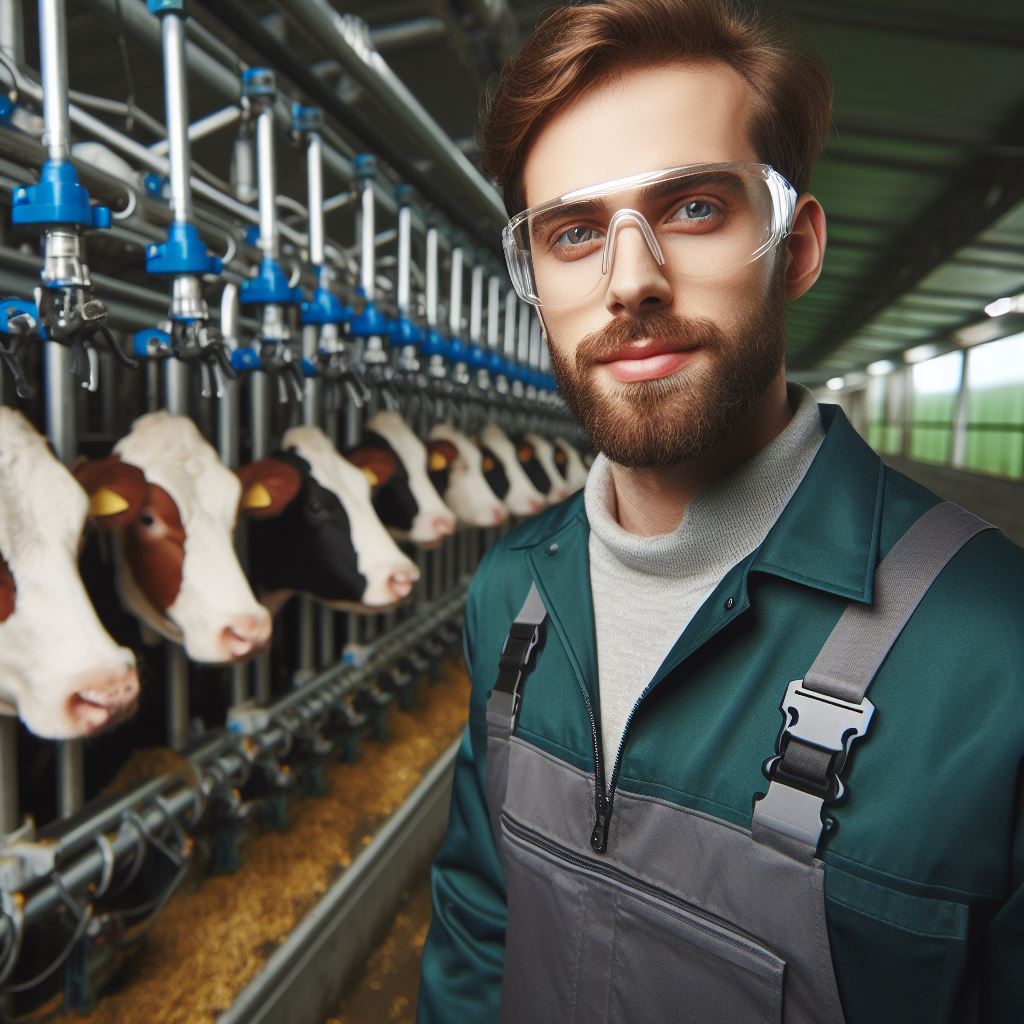Introduction
In the realm of agriculture, pig farming is a linchpin, influencing both food production and economic sustainability.
As we venture into this exploration, the pivotal decision of choosing between pasture and indoor methods takes center stage, significantly shaping the industry’s landscape.
This section provides a thorough overview, emphasizing the weight of this choice and its profound impact on pork quality, environmental considerations, and economic viability.
Our journey delves into the intricate dynamics of these farming methods, aiming to empower farmers with insights that facilitate informed decision-making.
The nuances of pasture vs. indoor pig farming are key to crafting sustainable and efficient practices.
By navigating these complexities, farmers can align their choices with broader goals, contributing to the resilience and sustainability of the pig farming sector.
Join us on this exploration as we unravel the intricate tapestry that defines the future of pig farming, where choices made today echo in the realms of agriculture, food production, and economic vitality.
Read: Layer vs. Broiler: Choosing Your Poultry Path
Pasture Pig Farming
Definition and explanation of pasture pig farming
Pasture pig farming involves raising pigs in outdoor settings, such as fields or paddocks, where they can freely roam and forage.
Advantages of pasture pig farming
Pasture pig farming offers several advantages over indoor confinement systems.
By allowing pigs to graze and forage freely, they have access to a more natural and nutritious diet.
This diet, supplemented with commercial feed as needed, enhances the quality of the pork produced.
Additionally, the reduced reliance on commercial feed helps manage production costs, making pasture pig farming economically viable.
Moreover, pigs raised in pasture-based systems experience improved health and welfare.
The ability to exercise and engage in natural behaviors reduces stress levels, promoting overall well-being.
Transform Your Agribusiness
Unlock your farm's potential with expert advice tailored to your needs. Get actionable steps that drive real results.
Get StartedThe pigs have more space to roam and explore, mimicking their natural habitat.
This freedom of movement and stimulation leads to healthier and happier pigs.
Challenges and considerations of pasture pig farming
However, there are challenges and considerations that must be addressed when practicing pasture pig farming.
One major concern is land requirements and management.
Sufficient land is necessary to provide adequate grazing opportunities for the pigs.
Additionally, rotational grazing and proper pasture management are crucial to prevent overgrazing and maintain the health of the land.
Another challenge is predator protection and the need for secure fencing.
Pigs kept outdoors are vulnerable to attacks from predators such as coyotes or wild dogs.
Farmers must implement effective fencing systems and employ strategies to deter or repel potential threats to ensure the safety of the pigs.
Furthermore, climate and seasonal variations can greatly impact pasture-based pig farming.
Weather conditions and changes in seasons affect the availability and quality of forage.
During periods of drought or extreme temperatures, the pasture may not provide enough sustenance for the pigs.
Farmers need to adapt their management practices accordingly and have contingency plans in place to mitigate production losses.
Therefore, pasture pig farming offers numerous benefits, including a natural and nutritious diet, reduced dependence on commercial feed, and improved pig health and welfare.
However, it also presents challenges related to land management, predator protection, and the impact of climate variations on production.
By carefully addressing these considerations, farmers can successfully implement and maintain a sustainable pasture pig farming system.
Read: Waste Management in Pig Farms
Indoor Pig Farming
Definition and explanation of indoor pig farming
Indoor pig farming refers to the practice of raising pigs in confined spaces within buildings or barns.
Advantages of indoor pig farming
Indoor pig farming has gained popularity due to its numerous advantages.
By confining pigs within buildings or barns, farmers have better control over various environmental conditions, which directly impact pig growth and overall productivity.
Temperature, humidity, and ventilation can be regulated to create an optimal living environment for the animals.
Efficient space and resource utilization is another significant advantage of indoor pig farming.
In these systems, vertical farming techniques can be employed, allowing farmers to make the most efficient use of limited space.
This is particularly advantageous in areas with high land costs or limited availability.
Showcase Your Farming Business
Publish your professional farming services profile on our blog for a one-time fee of $200 and reach a dedicated audience of farmers and agribusiness owners.
Publish Your ProfileWith proper planning and design, indoor pig farming can produce a higher number of pigs within a smaller area compared to traditional outdoor methods.
Furthermore, indoor pig farming reduces exposure to external threats and hazards.
Pigs kept indoors are less vulnerable to diseases carried by pests, predators, or other animals.
They are also protected from extreme weather conditions such as excessive heat, cold, or heavy rainfall.
This reduced exposure to external threats improves the overall health and well-being of the pigs.
Challenges and considerations of indoor pig farming
However, indoor pig farming also poses specific challenges and considerations that farmers must address.
One major challenge is the higher dependence on commercial feed.
As indoor pigs do not have access to grazing areas, their diets must consist of formulated feeds designed to fulfill their nutritional requirements.
This reliance on commercial feed can increase production costs for farmers.
Another consideration is the increased focus on animal husbandry and biosecurity.
In indoor systems, pigs are kept in close proximity to one another, increasing the risk of disease outbreaks.
To mitigate this risk, farmers must implement strict biosecurity measures, including regular cleaning and disinfection of facilities, as well as careful management of pig movement and introduction.
Finally, potential welfare concerns and ethical considerations arise with the confinement of pigs in indoor systems.
The limited space available may restrict the natural behaviors and movements of the animals, leading to welfare concerns.
It is crucial for farmers to prioritize the well-being of the pigs and ensure their ethical treatment throughout the farming process.
Most importantly, indoor pig farming offers several advantages such as control over environmental conditions, efficient space utilization, and reduced exposure to external threats.
However, it also brings challenges related to commercial feed dependence, animal husbandry practices, and potential welfare concerns.
As the demand for pork continues to rise, finding a balance between efficient production and ethical considerations in indoor pig farming is crucial for the long-term sustainability of the industry.
Read: Pig Farm Biosecurity Essentials

Comparison and Analysis
In the ever-evolving landscape of pig farming, the choice between pasture and indoor systems emerges as a pivotal decision, exerting influence on various dimensions critical to the industry.
This section embarks on a detailed exploration, delving into the nutritional, environmental, and economic aspects to unravel the intricacies of each approach and aid farmers in making informed decisions aligned with their goals and values.
Nutritional Aspects
Comparison of Pork Quality and Taste
- Pasture: Diverse diets in an outdoor setting contribute to nuanced flavors, influenced by natural forage.
- Indoor: Controlled diets within confined spaces may result in consistent but potentially less complex taste.
Impact on the Nutritional Value of Pork Products
- Pasture: Pigs roaming outdoors ingest varied forage, resulting in higher Omega-3 fatty acids and vitamin content.
- Indoor: Controlled diets may lack certain nutrients, necessitating supplementation for optimal nutritional profiles.
Environmental Factors
Examination of Carbon Footprint and Greenhouse Gas Emissions
- Pasture: Lower carbon footprint as pigs graze on forage, minimizing the environmental impact.
- Indoor: Higher emissions due to the energy-intensive nature of maintaining climate-controlled environments.
Effects on Soil Health and Biodiversity
- Pasture: Positive impact on soil health as foraging pigs contribute to soil aeration; diverse forage enhances biodiversity.
- Indoor: Limited impact on soil health and biodiversity due to confined spaces restricting natural activities.
Economic Considerations
Evaluating Production Costs and Profitability
- Pasture: Potential for lower feed costs with outdoor systems, but considerations include land requirements.
- Indoor: Controlled environments may incur higher feed costs, yet efficient space utilization can lead to profitability.
Consumer Demand and Marketing Opportunities
- Pasture: Appeals to consumers valuing natural, free-range products; niche markets may offer premium prices.
- Indoor: Meets mass-market demand for consistent, controlled production; opportunities in broader distribution channels.
In essence, the pasture vs. indoor pig farming decision is a multifaceted challenge, necessitating a careful balancing act.
Farmers must navigate the complexities of nutritional quality, environmental impact, and economic viability to align with their overarching goals and meet the demands of the market.
This choice not only shapes farming practices but also significantly influences the quality of the pork produced and the environmental footprint left by the farming operation.
A nuanced understanding of these factors is essential for farmers aspiring to implement sustainable, economically viable, and consumer-responsive pig farming practices in an industry that continues to evolve.
By making informed decisions, farmers can contribute to the overall resilience and sustainability of the pig farming sector while meeting the changing demands and expectations of consumers and the broader agricultural landscape.
Read: Pig Behavior: Understanding Your Herd
Conclusion
The dynamic between pasture and indoor pig farming unveils distinct advantages and challenges.
Pasture farming offers flavorful pork and environmental benefits but demands considerable land.
Conversely, indoor farming ensures consistent production but grapples with higher emissions.
Emphasizing the need for a balanced approach, a harmonious blend of both methods holds the key.
Integrating the strengths of each while mitigating challenges ensures a sustainable and resilient future for pig farming.
This requires a thoughtful and innovative approach, encouraging ongoing research and exploration of sustainable farming methods.
By fostering a nuanced understanding and continuous innovation, the industry can evolve towards practices that prioritize both efficiency and environmental responsibility.
The journey ahead in pig farming lies in striking a balance, combining the best of pasture and indoor methods for a thriving and sustainable future.




